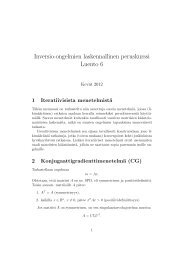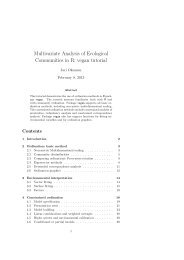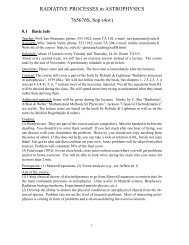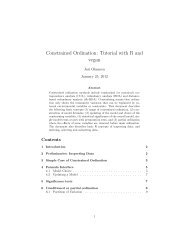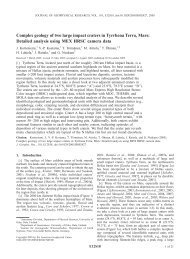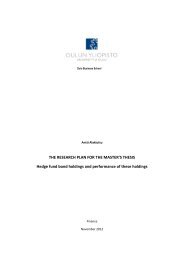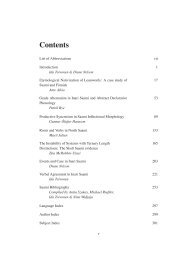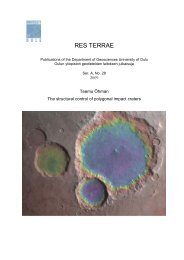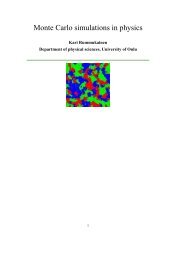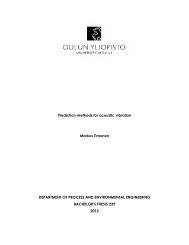Juha Köykkä - Oulu
Juha Köykkä - Oulu
Juha Köykkä - Oulu
- TAGS
- juha
- oulu
- cc.oulu.fi
Create successful ePaper yourself
Turn your PDF publications into a flip-book with our unique Google optimized e-Paper software.
Res Terrae, Ser. A 32, J. <strong>Köykkä</strong>, Sedimentology of the Mesoproterozoic Telemark basin-fills, South Norway: implications for<br />
sedimentation processes, depositional environments and tectonic evolution<br />
quence stratigraphy, and geochemistry. However, despite the limitations, it is still poss-<br />
ible to build a coherent tectonic-sedimentary history of a basin by using a multifaceted<br />
approach and by following the basin analysis flow chart from the bottom up, as in this<br />
thesis.<br />
6.2 Tectonic-sedimentary evolution of the Telemark basin-fills<br />
There is a general consensus, on a global scale, that present day southwest Norway<br />
was moved into its present location during the Sveconorwegian orogeny. The main de-<br />
bate has concerned two possible models for terrane/block assembly at the onset of the<br />
Sveconorwegian Orogeny (e.g., Åhäll et al., 1998; de Haas et al., 1999; Bingen et al.,<br />
2001, 2005, 2008b; Andersen et al., 2002b; Corfu and Laajoki, 2008 and references<br />
therein). Based on geochronology, isotope geochemistry, and metamorphic events, the<br />
exotic model suggests that the Telemark block evolved outside (proto)Baltica and<br />
welded with the Baltica during the Sveconorwegian Orogeny. Arguments for the exotic<br />
model are mostly based on a widespread 1.22–1.13 Ga magmatism in the Telemark<br />
block without equivalents in nearby terranes, and on a gabbro-tonalite complex (ca.<br />
1.20–1.18 Ga) in the Bamble terrane, which has a geochemical signature indicating<br />
that the Telemark block subduction prevailed at the margin or the outboard of the Bal-<br />
tica (see Bingen et al., 2005, 2008b and references therein; Corfu and Laajoki, 2008).<br />
The indigenous model, however, suggests that the Telemark block was attached to the<br />
Baltica, either as a peripheral or as part of the margin. The indigenous model is sup-<br />
ported by the geochronology of different magmatic suites, with equivalents in cratonic<br />
Fennoscandia, isotopic compositions of magmatic and sedimentary rocks and detrital<br />
isotope geochemistry showing the Paleoproterozoic felsic provenances in the Baltica<br />
(de Haas et al., 1999; Andersen et al., 2001; Bingen et al., 2001, 2003, 2005, 2008b;<br />
Andersen et al., 2002b; Laajoki and Corfu, 2007).<br />
The analyzed U-Pb and Lu-Hf data presented in Paper IV suggest that the deposi-<br />
tional basin for the Telemark supracrustal rocks was situated closer to the Laurentia<br />
supercontinent and later moved to its present location along a sinistral strike-slip fault<br />
(Fig. 9). This scenario was also suggested by authors such as Torske (1985), de Haas et<br />
al. (1999) and Bingen et al. (2005). In Paper IV, the majority of the analyzed U-Pb<br />
ages in the sediments can be matched with known basement rocks in both Fennoscan-<br />
64



